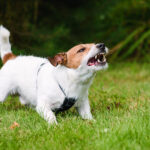What Happens If You Cut A Dogs Whiskers
What Happens If You Cut a Dog’s Whiskers?
Dogs are beloved pets in many households, and as responsible dog owners, we want to ensure that our furry friends are always safe and healthy. One question that often arises is what happens if you cut a dog’s whiskers? Are they just for looks or do they serve an important purpose? In this article, we’ll explore the world of dog whiskers and what could happen if you were to cut them.
What Are Dog Whiskers?
Dog whiskers, also known as vibrissae, are long, stiff hairs that grow on different parts of a dog’s body, including their muzzle, chin, above their eyes, and on their front legs. These hairs are much thicker than regular fur and are deeply embedded into the skin.
Whiskers are not just for show; they serve several purposes. They help dogs navigate their environment by sensing objects and changes in air currents. They can also indicate the mood of a dog – when dogs are happy or relaxed, their whiskers will be soft and relaxed too. Conversely, when they’re feeling threatened or aggressive, their whiskers will be stiff.
Cutting a Dog’s Whiskers – What Could Happen?
If you’re considering cutting your dog’s whiskers because they look unsightly or messy, it’s essential to understand the potential consequences before doing so. Cutting a dog’s whiskers can have serious implications on their health and wellbeing.
Firstly, cutting a dog’s whiskers can disrupt their ability to sense their surroundings correctly. This can lead to confusion and disorientation in previously familiar environments.
Secondly, cutting a dog’s whiskers can affect their communication with other dogs. As mentioned earlier, when dogs are feeling threatened or aggressive, their whiskers will become stiff. Without this visual cue from their whiskers, dogs may misinterpret social cues from other dogs, leading to aggressive or fearful behavior.
Thirdly, cutting a dog’s whiskers can cause physical pain and discomfort. Whiskers are deeply embedded into the skin and have a large number of nerve endings. Cutting them can lead to pain and inflammation in the affected area.
Lastly, many dogs rely on their whiskers for balance. Without them, they may be prone to accidents and falls, leading to injury.
What Can You Do If Your Dog’s Whiskers Are Damaged?
If your dog’s whiskers are damaged or injured, it’s essential to seek veterinary attention immediately. Damaged whiskers can be painful and uncomfortable for your pet, and it’s best to have a professional assess the situation.
In some cases, veterinarians may need to remove damaged whiskers altogether. This procedure is usually done under anesthesia and is relatively straightforward. However, it’s important to note that removing whiskers should only be done as a last resort.
Conclusion
In conclusion, cutting a dog’s whiskers is not recommended unless there is a medical reason for doing so. Dog whiskers serve several important purposes beyond aesthetics, including helping dogs navigate their surroundings, indicating their mood, and communicating with other dogs.
If you’re concerned about the appearance of your dog’s whiskers or they appear damaged, it’s best to seek veterinary attention rather than attempting to cut them yourself. Remember, your pet relies on their whiskers for their wellbeing – let’s keep them safe and healthy!



